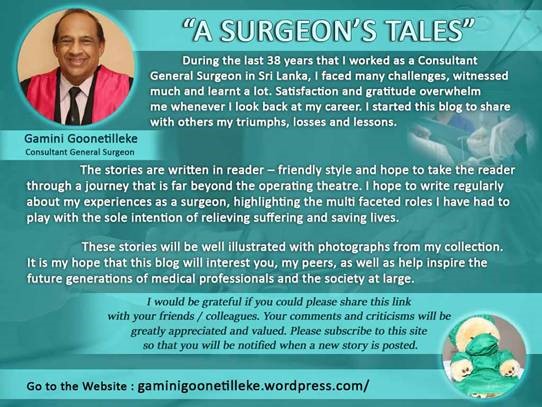Flying to the Northern Warfront in the 1990’s – by Dr Gamini Goonetilleke
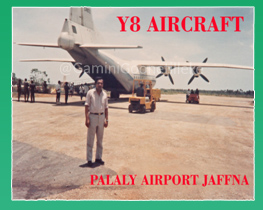
Source: A Surgeon’s Tales “Reminiscence of a Surgeon” – Dr Gamini Goonetilleke
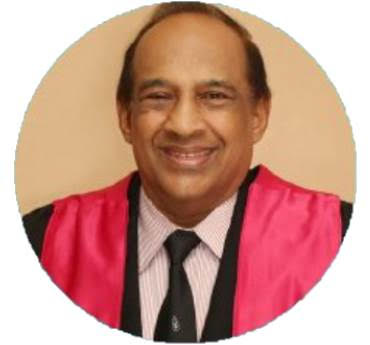
“I was never a military surgeon! I was not even enlisted as a volunteer doctor to serve in the Sri Lanka Army Medical Corp. I gathered considerable experience in the management of war casualties while working as the only surgeon at the Base Hospital, Polonnaruwa. I wanted to use that experience for the benefit of the army personnel injured in conflict. Thus I volunteered my services to treat the armed forces injured in battle in the North”.
Background
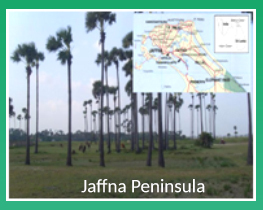
The explosion of a Landmine in Thirunelvely in the Northern city of Jaffna on the 23rd of July 1983 originated the onset of clashes between the Sri Lankan Armed Forces and The Liberation Tigers of Tamil Eelam (LTTE) in the Northern Province. This phase of the war was designated as Eelam War 1. The clashes went on till the Indian intervention and the arrival of the Indian Peace Keeping Force (IPKF) in 1987. After the arrival of the IPKF, the Sri Lankan forces were confined to their barracks. However, clashes occurred between the IPKF and the LTTE after a short lull in fighting. Following the departure of the IPKF, clashes resumed between the armed forces and the LTTE on 10th June 1990. Initially, it was guerrilla warfare. By the time the IPKF left the country both parties had gained strength and were also better equipped. The stage was now set for fierce battles. The intermittent clashes and organised military operations against the enemy went on till the end of the war in May 2009 resulting in many casualties and deaths to personnel of both parties to the conflict.
The frontline soldiers are bound to suffer the serious consequences of war –
———Death and Injury——-
It was of utmost importance to make sure that medical facilities were available to the soldiers when they were injured.
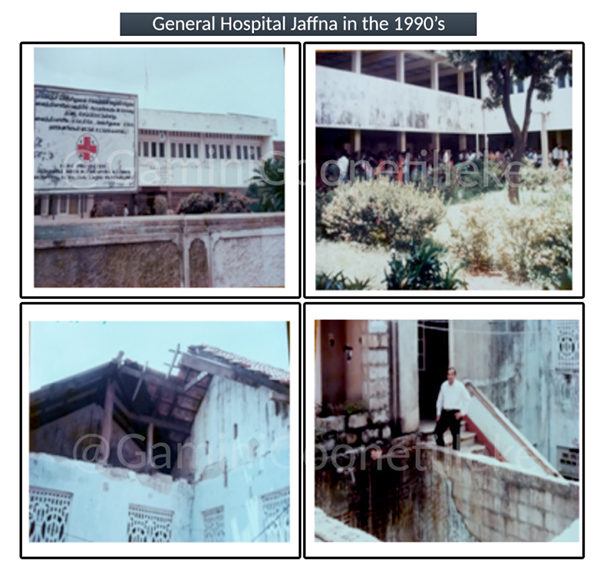
Paradoxical situation
The injured LTTE cadres had free access to the General Hospital, Jaffna coming under the purview of the Ministry of Health and funded by the Government of Sri Lanka, for treating their casualties at Government expense.
It was rather strange and a paradoxical situation that the injured men of the Armed Forces of Sri Lanka fighting to maintain the territorial integrity of the island nation were not able to receive treatment at the General Hospital,Jaffna.
The hospital was not accessible to the armed forces. There was also a serious security threat posed to the injured soldiers of the armed forces if they were taken to the Government-run hospital situated in the Jaffna city in an area controlled by the LTTE.
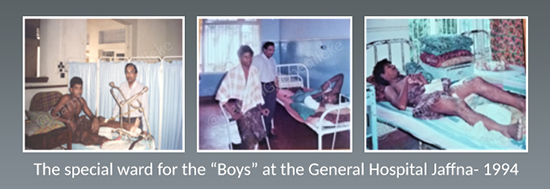
What was the alternative?
The Palaly Complex
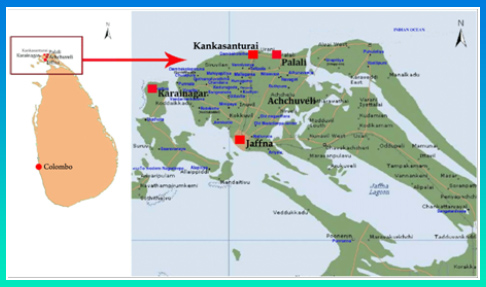
The Security Forces (SF) Headquarters of the Northern Province was situated in Palaly. This is a small town 20 km to the north of the city of Jaffna and was declared a High-Security Zone (HSZ) by the Sri Lanka Army due to civil war and comprised an area of approximately 25 sq km. The HSZ in Palaly was the home to many vital installations of the armed forces of Sri Lanka. They included the following.
- The S F Headquarters, which was the “nerve centre” for all military operations in the Jaffna Peninsula. This was also the centre for receiving arms, ammunition, supplies including food to all the camps in the peninsula.
- The Sri Lanka Army Base, the largest army camp in the Jaffna peninsula.
- The Sri Lanka Army Medical Corps maintained a small Base Hospital at Palaly adjoining the Airport.
- The Sri Lanka Air Force headquarters in the Jaffna peninsula.
- The only airport in the Northern city of Jaffna
- The third regiment of the Sri Lanka Signal Corp
- The Naval base SLNS Uttara was situated at Kankesanturai close to Palaly. The main naval base was situated at Karainagar, close to the mainland and under the HSZ.
The Palaly complex was of vital importance and significance to the armed forces during the civil war. Every effort was made to thwart any attempts at infiltration or attacks on this complex by the LTTE which in fact they attempted on various occasions only to be repulsed by the combined military power of the army, navy and air force which was far superior to that of the LTTE
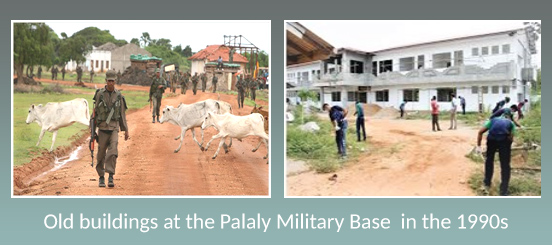
Loss of Territory
The Sri Lankan forces occupied only small areas in the Jaffna peninsula. These included the complex at Palaly, Jaffna Fort, the area around Point Pedro and the large camp at Elephant Pass at the entrance to the peninsula. With victory and defeat following many organised military operations, the landmass held by the security forces changed many a time. However, for all practical purposes and security reasons the Northern war front in Jaffna was cut off from the south by large swathes of territory held by the enemy, and as such the land route (A9) was not available for transport of material, men and ammunition and the evacuation of casualties to hospitals in the south.
Routes available for supplies
- Sea Route – Sri Lanka Navy convoys shuttling from the port of Kankesanturai to the major naval base at Trincomalee was able to shuttle men and material to Jaffna. But this was slow and at times of conflict, had to fight a running and relentless gauntlet of sea tiger attacks.
- Aerial Route – This became the most important route for the transfer of men and material from Colombo to Jaffna. The Sri Lanka Air Force in Palaly served as the main life-line in the Jaffna peninsula with the utilisation of the airport situated at Palaly. The Colombo- Jaffna and on occasions Jaffna – Anuradhapura air bridge was established by the aircraft in the possession of the Air Force.
The Air Base in Palaly was of critical importance for the transfer of men, material, ammunition and also for the evacuation of the injured to hospitals in Colombo and Anuradhapura.
THE AERIAL ROUTE WAS THE ONLY ROUTE AVAILABLE FOR MEDICAL TEAMS VISITING THE NORTHERN WAR FRONT TO TREAT THE INJURED IN WAR.
The Palaly Airport
The Palaly airport was built by the British during World War 11. It was used as the second international airport in Sri Lanka till it was handed over to the Sri Lanka Air Force in 1951. Since then it had been used only for military purposes till 2020 when it was upgraded to an international airport. The airport was well secured, but many terrorist attacks on it were repulsed. There was only one runway available for landing and take-off of aircraft.
Flying to the War Front in Jaffna
The flights operated from Ratmalana (Colombo) to Palaly, Jaffna. Flying to war torn Jaffna was nerve-wracking initially. But I got used to it gradually. On most occasions, these were direct flights, but there were times when the flight had a stopover at Anuradhapura to pick up personnel and cargo and then proceed to Jaffna. The Colombo – Jaffna flight usually took-off in the morning. A security check and identification were compulsory. There were two to three flights per day. There were also days when there were no flights to Jaffna for various reasons and we had to spend a few more extra days at the hospital till our replacements arrived.
The Aircraft
In the early 1990s, I remember flying to Palaly, Jaffna in the Chinese built fixed-wing aircraft – Y8 and Y12 expertly flown by our very own pilots in the Sri Lanka Air Force. They did a commendable job under extremely difficult circumstances with a threat of missile attacks later on, and the need to suddenly change course to avoid enemy fire. The Avro 748 was also used to ferry passengers from Ratmalana to Palaly. The Antonov B 32 manufactured in Soviet Union/Ukraine was added to the fleet later on. I remember flying in these aircraft as well, initially flown by pilots from Ukraine. We were a bit concerned at first but later realised that they too were experts not only in flying but building planes as well. They handled their task efficiently with the safety of everyone in mind. Bell Helicopters played an utility role and were also used on occasions to ferry medical teams in emergency situations.
Y12, Y8, Avro 748, Antonov B 32: The aircraft that I travelled-in
I was curious about the various aircraft and was interested in flying. That I did by visiting the cockpit on many occasions and also found out details about the flying routes and pilot communications with the control tower etc. The friendly pilots of Sri Lanka were accessible to me on many occasions while flying, and at other times during friendly “chats” in the officers’ mess at the Palaly Air Force Base. I gathered a wealth of information to improve my knowledge about aircraft and flying I also gathered details about these aircraft by reading. I never knew that, what I learnt would be useful to me many years later to write these stories.
Harbin Y12
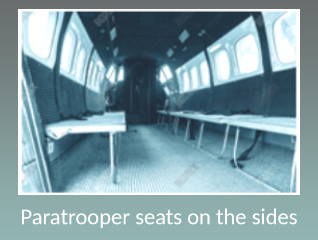
This was a Chinese built small military transport aircraft. The cockpit could accommodate only two, the pilot and the co-pilot. It had the capability of carrying 15 passengers or 15 paratroopers. The paratrooper seats were on the sides with seat belts and these seats were used on occasions. However, there were no paratroopers during the flight to Palaly. There were instances when the number of passengers exceeded 15 and they were accommodated in the cabin without seats. The seat was the floor of the aircraft. The aircraft carried everything necessary for the troops in addition to arms and ammunition and was cruising at a speed of 250 km/h carrying a maximum load of 1700 kg. Being unpressurized, the maximum altitude of flying was limited to 10,000 ft and the cabin was noisy, hot and vibrating. We also transported patients on stretchers lying on the floor and up to 5 patients could be accommodated at any one time. That was on the return trip to Colombo.
Shaanxi Y8
Compared to the Y12, this was a larger aircraft built especially for military transport. The crew consisted of six with a few seats just behind the cockpit. The cockpit and the area behind with seats were sealed off from the rest of the aircraft as this area was pressurized. I was lucky to get a seat in this area on occasions if there was an officer known to me on the flight. If not I travelled in the compartment behind the seats on the floor as it could accommodate 90 passengers in addition to cargo, the maximum load being 20,000 kg. The cargo included almost everything necessary for the troops in the Jaffna Peninsula. There were also some metal barrels transported at times and I have travelled to Palaly sitting on these barrels as there were no seats on occasions. Only later did I realise that these were “barrel bombs”.
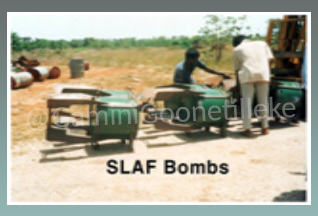
“I have travelled to Palaly, Jaffna sitting on metal barrels in the cargo compartment. Only later did I realise that these were barrel bombs”
I was lucky! If there were passengers in the unpressurized area, the maximum altitude could not be beyond 10,000 ft. cruising at around 500 km/h. Being specially built for transport, the aircraft was also equipped with a ramp at the rear. The Sri Lanka Air Force lost two Y 8 aircraft during the conflict and I understand that this aircraft is no more in use. So, travelling in a Y8 sitting on “barrel bombs” is history.
Antonov B 32
We flew in the Antonov B 32 later on. If my memory serves me right, that was after 1995. These were large Military transport aircrafts with a crew of four. The entire aircraft was pressurized and therefore more comfortable and not noisy and flew at a higher altitude (20,000 ft). This aircraft carried about 50 passengers on each trip to Palaly and used to fly about five to six times a day with only a short stopover for loading and unloading. Initially, they were flown by pilots from Ukraine. This aircraft had a bigger capacity to accommodate casualties on stretchers, I believe about 20 on stretches could be kept on the floor of the aircraft. The other advantage of this plane was that it could fire flares to repulse missiles fired by the enemy.
These were military aircraft used for transport of cargo with a limited number of seats for the personnel in some planes the seats were in front and in others on the two sides. The conditions inside the aircraft were unlike that of a commercial flight – very hot with severe vibration and high levels of noise. On occasions, there were more passengers than the number of seats that were available and therefore we had to sit on the floor of the aircraft. That was a difficult situation, especially during take-off and landing. But we had to cope with the situation!
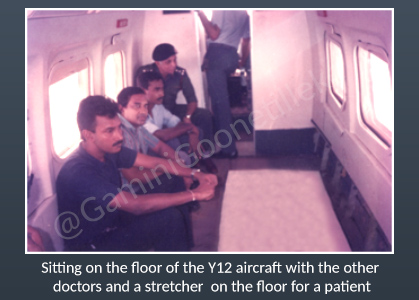
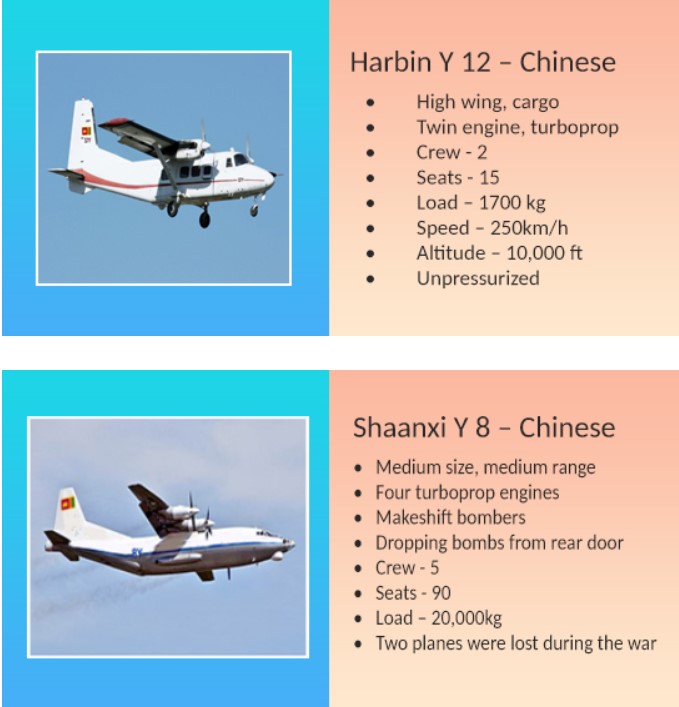
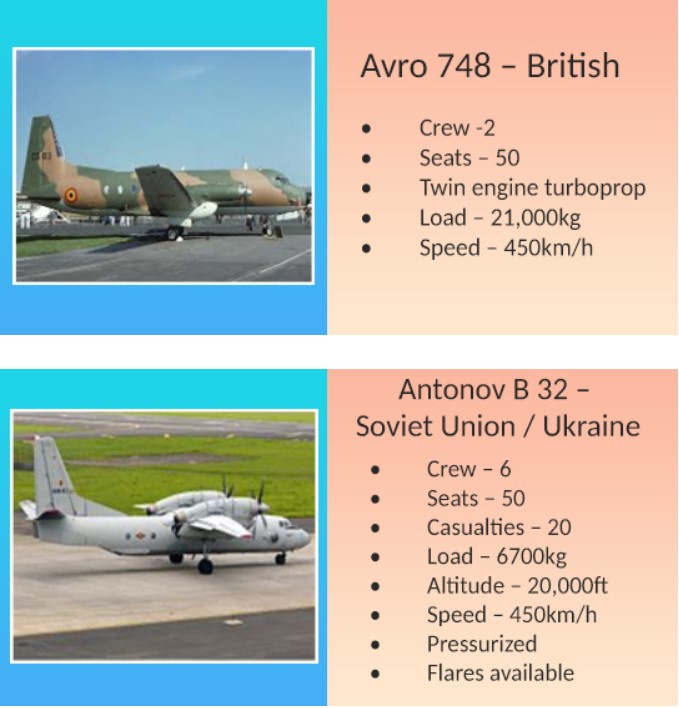
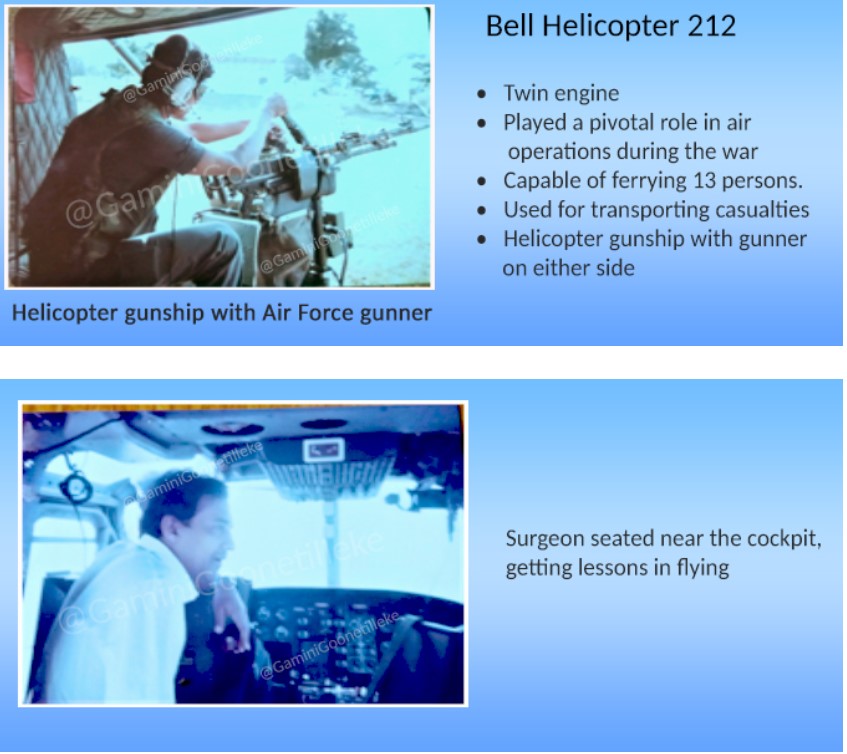
Duration of flight to Palaly and flight path
A flight leaving Ratmalana took about one hour to reach Palaly. It was a direct route flying at first over sea and then over land and we could see trees and houses below. Then the flight crossed the Jaffna lagoon and city to land at the airport. This was till about April 1995. From 1990 to 1992, the Sri Lanka Air Force lost 4 planes. This included two SIAI Marchetti’s, One Pucara and one Y8 transport plane. By April 1995, flying to Palaly was a major risk as Two Avros had been brought down by the Man-Portable-Air-Defence-System (MANPADS) of the LTTE. But, flights to Palaly had to continue, except for a brief period, as this was the only supply route.
After that, I observed that the pilots took a different route. It was a question of flying mostly over sea. Close to the Jaffna peninsula the planes flew west of Delft island and then past Karainagar. On reaching a certain point beyond Karainagar the planes started descending over a sea corridor north of Palaly protected by naval gunboats to land at the Palaly airport from the seaside. That was a safer route to avoid being fired at by the enemy. This same route was used for flights leaving Palaly back to Ratmalana.
On occasions, the flights diverted to Anuradhapura Air Base to pick troops and cargo. While these flights flew over land in the early 1990s, after the debacle in April 1995, the flights had to fly towards Puttalam and then follow the route mentioned earlier.
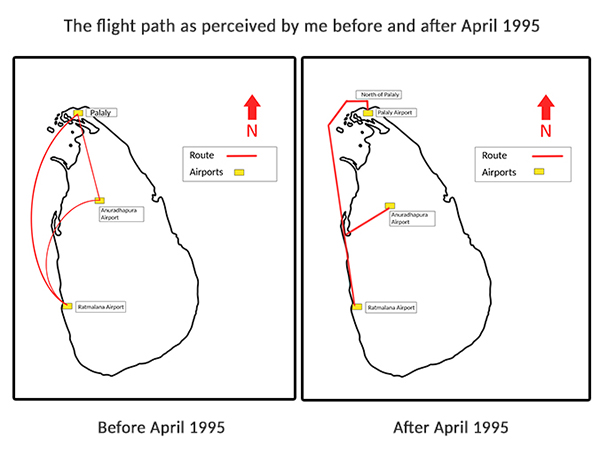
If the flights from Colombo to Palaly took troops, cargo and ammunition, the return flights to Colombo carried the troops going on leave, medical teams after their turn of duty, patients on their way to Anuradhapura or Colombo and those who had died in the conflict in “body bags”. That was a sad part to witness: men who had made the supreme sacrifice in fighting to eliminate terrorism from this land.
Residential facilities in Palaly
The civil doctors were provided with a separate house about 100 meters from the hospital. This was called the “Doctors Chalet”. After my first visit to Palaly, I was curious to know the exact meaning of a chalet. According to the Oxford Dictionary, it refers to a “small cabin in a holiday camp”. During the early days, this “chalet” did not have the basic facilities, but over time various improvements were carried out. However, on occasions, my friends on duty at the army camp in Palaly invited me to share their quarters. They were much better. I was lucky and I am grateful to these officers. There were also times that I was invited to the Commanding Officers Chalet. This was truly luxurious and red-carpeted with all the facilities. I occupied what was given and did my duty as I was there to serve and not to complain about facilities when the army was fighting a war.
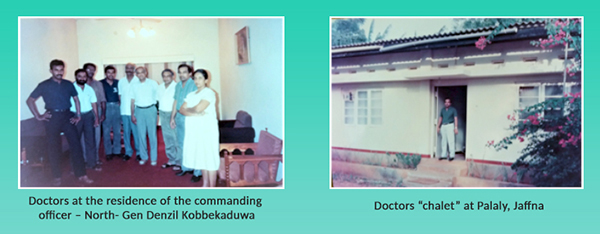
“Only those who will risk going too far can possibly find out how far one can go” T S Eliot
Appreciation- I am eternally grateful and thankful to all the brave and courageous Pilots and Officers of the Sri Lanka Air Force for their service to the motherland during the civil war and flying under tremendous pressure to make sure that the life-line of the troops engaged in battle was maintained at any cost.
I also take this opportunity to salute those Pilots, Officers and other ranks who made the supreme sacrifice in the cause of eliminating terrorism from our motherland, Sri Lanka.
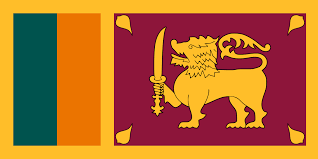
…………… The story of the management of the casualties at the Palaly Base Hospital, Jaffna and their transfer to Colombo or Anuradhapura hospital will be described in the next post…………


